Settings
The settings for the People Hub web part are organized into four sections:
- General
- Directory
- Tree
- Advanced
Below is a detailed description of each section and its configurable options.
- 1. General
- 2. Directory
- 3. Tree
- 4. Advanced
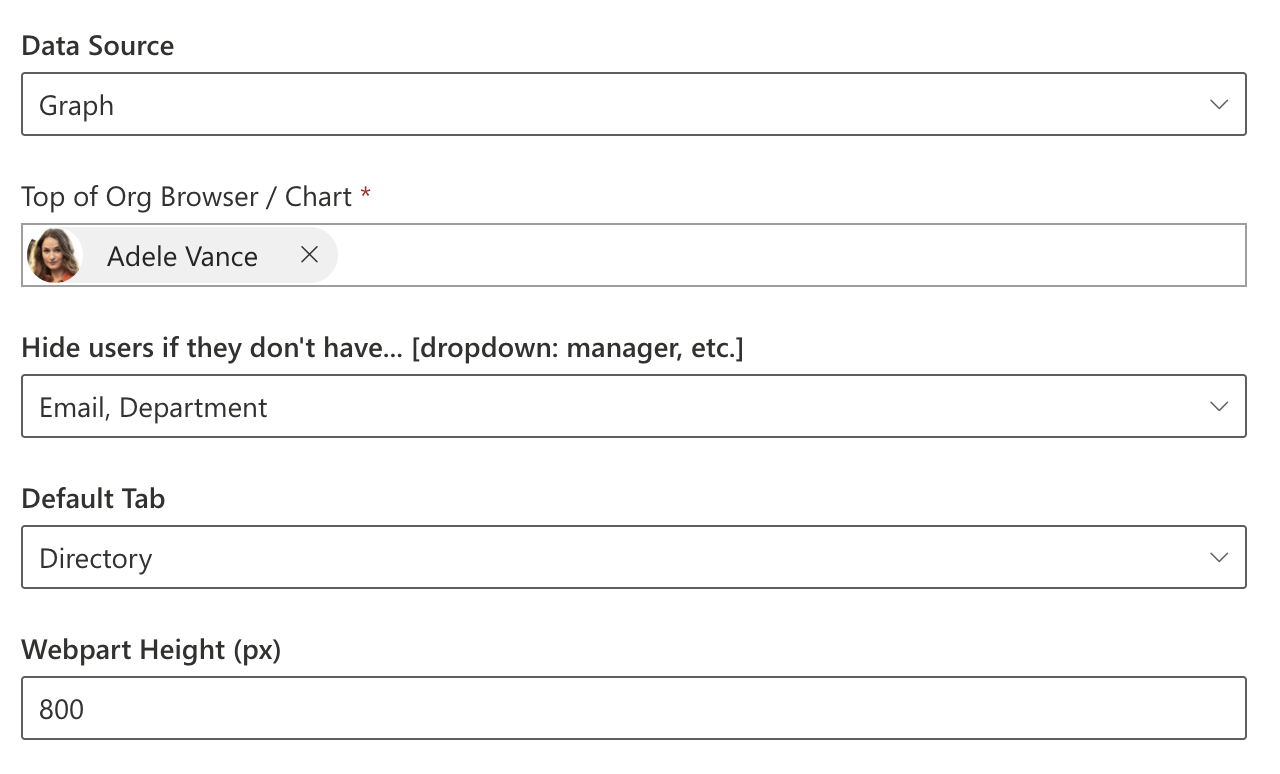
| Setting | Description |
|---|---|
| Data Source | Select your preferred data source for the People Hub: • Microsoft Graph - Recommended for optimal performance and real-time profile updates. Provides direct access to Azure Active Directory data with comprehensive user information. • SharePoint List - Ideal for scenarios where you need to create or manage custom people properties not supported by Active Directory, or when you need complete control over your people data structure. • Test Data - For development, testing, and demonstration purposes without requiring production data. |
| Top of Org Browser / Chart | Select the user who will be at the top of the organizational chart or browser: • Mandatory field - The People Hub web part requires this information to properly generate and display the organizational tree. Without this information, the People Hub web part cannot construct the organizational structure. • Hierarchical structure - This user will be positioned at the top of the organizational chart, serving as the root of the hierarchy. |
| Hide users if they don't have... | Select options to filter out users with incomplete profile information. This helps create cleaner organizational views by excluding users who are missing important attributes such as manager assignments, email or department. |
| Default Tab | Specify which view should be displayed first when users access the People Hub web part: • Directory - Shows all users in a searchable list format • Organization Browser - Displays the hierarchical organization structure in a browsable interface • Organization Chart - Presents the organization in a traditional org chart visualization |
| Webpart Height | Define the vertical space (in pixels) that the People Hub web part will occupy on the page. Adjusting this setting allows you to control how much content is visible without scrolling. |
MISC
You can use query string parameters to override the default view of the People Hub. This will not change your default tab setting but will simply override it when the specified query parameter is present in the URL.
| Query String | Description |
|---|---|
| ?view=Directory | Set the default view mode to Directory tab |
| ?view=Org Browser | Set the default view mode to Org Browser tab |
| ?view=Org Chart | Set the default view mode to Org Chart tab |
When using "Org Browser" or "Org Chart" in the query string, make sure to include a space between the words or use %20 (e.g., "Org%20Browser"). Otherwise, the view override will not work correctly.
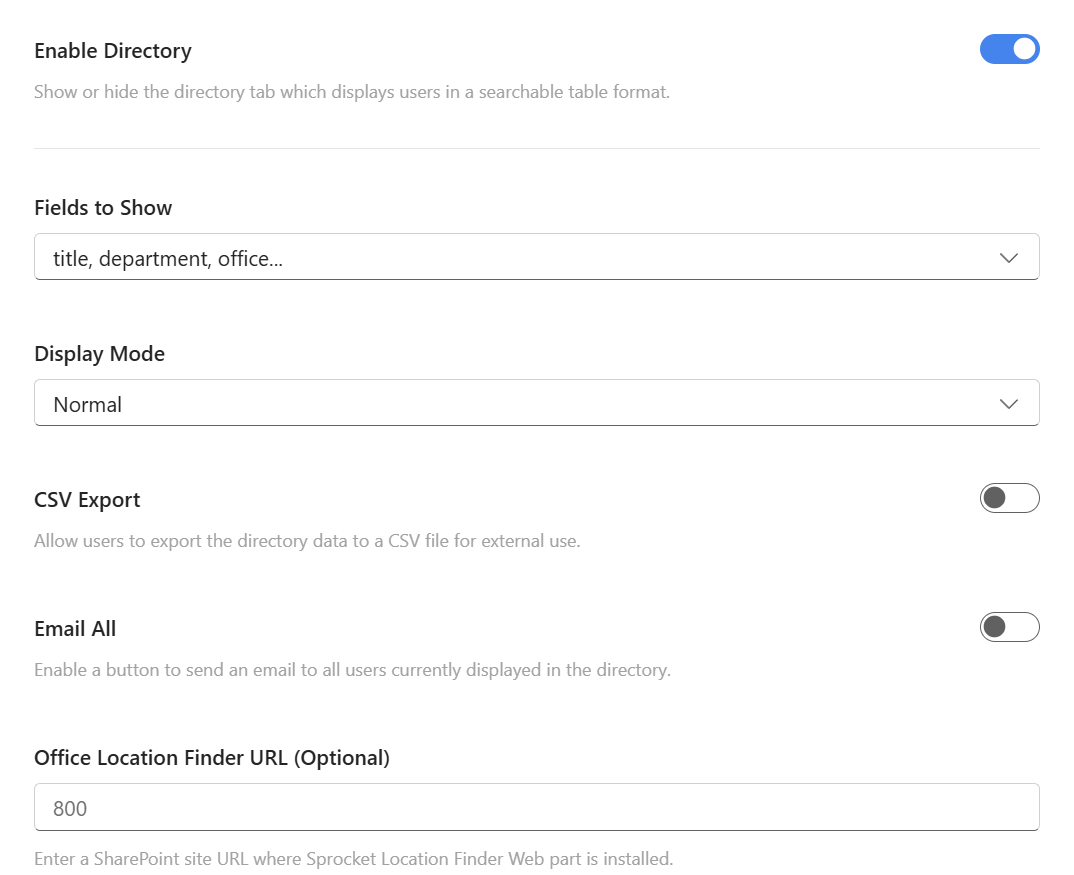
| Setting | Description |
|---|---|
| Enable Directory | Toggle to enable or disable the Directory view. |
| Fields to Show | Select the fields to be displayed in the directory. |
| Display Mode | Choose the display mode for the directory. |
| CSV Export | Toggle to hide the CSV export button, preventing users from downloading directory data. This helps maintain data privacy and control information distribution within your organization. |
| Email All | Toggle to hide the "Email All" button, preventing users from sending mass emails to everyone in the directory. This helps avoid inbox flooding and supports responsible communication practices. |
| Office Location Finder URL | Enter the URL of the page containing the Sprocket Location Finder web part. This enables users to click on office locations in the directory and be directed to a map showing that location. For implementation details, see the Location Finder documentation. |
The Top of Org Browser / Chart field is mandatory for the People Hub web part to properly generate and display the organizational tree. This field specifies the user who will be positioned at the top of the organizational chart. Without this information, the People Hub web part cannot construct the hierarchical structure of the organization.
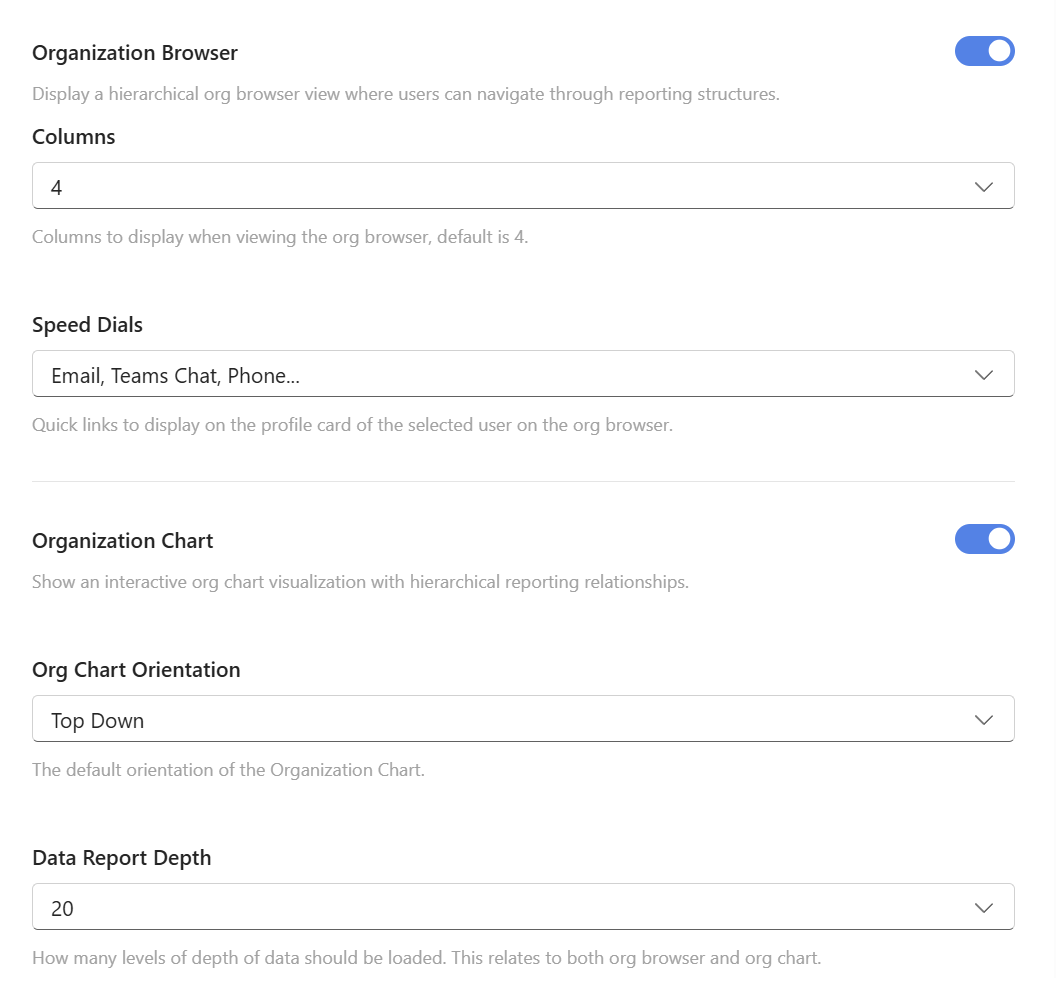
| Setting | Description |
|---|---|
| Organization Browser | Toggle to enable or disable the Organization Browser. |
| Columns | This setting controls the number of columns used to display the Organization Browser. You can adjust it to fit more or fewer items horizontally. |
| Speed Dials | 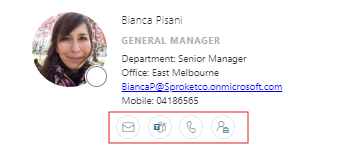 Select which action buttons to display in the speed dial section of the Organization Browser. These could include options like Email, Teams Chat, Phone, Profile, Office, or Link. |
| Organization Chart | Toggle to enable or disable the Organization Chart. |
| Org Chart Orientation | Select the default orientation of the Organization Chart. Choose from Top Down, Bottom Up, Left Right, or Right Left layouts. |
| Data Report Depth | Select how many hierarchical levels to display in the organizational report. Options range from "All" (default) to a specific number (up to 10). "All" shows the complete organizational structure, while selecting a specific number limits the depth to improve performance for very large organizations. |
| Sort Order | Choose the criteria used to sort the Organization Chart and Organization Browser. Note that this setting does not override the organizational hierarchy but instead sorts users within the same reporting level. |
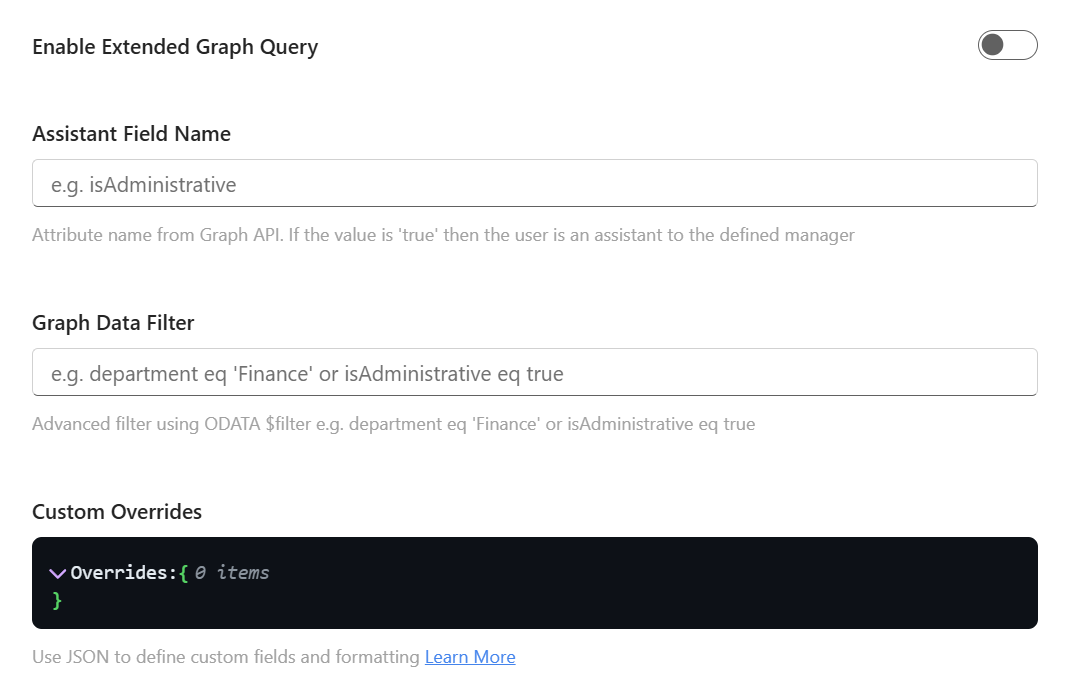
| Setting | Description |
|---|---|
| Enable Extended Graph Query | This setting allows you to enable advanced filtering by setting the ConsistencyLevel header to "eventual" and enabling the count parameter in queries. This can retrieve additional properties and apply extended filtering. For more details, refer to the Microsoft Graph documentation on advanced queries. |
| Assistant Field Name | Specify the field name in Active Directory (AD) or a SharePoint list that designates a user as an assistant. This corresponds to an attribute in the Microsoft Graph API. If the value is set to 'true', the user is displayed as an assistant to the defined manager in organization browser view. |
| Data Filter (Graph DataSource) | Use this setting to filter user data using OData $filter. For example, you can filter by department using a query like department eq 'Finance' to display only users from the Finance department. |
| Custom Overrides | Advanced users can add custom overrides to further adjust the behavior and appearance of the People Hub web part. For details on how to use custom overrides, please visit field section of the People Hub documentation. |
Here is a sample script you can add in overrides to hide users who have no managers:
{
"manager": {
"userMap": "manager",
"sourceMap": "manager",
"label": "Manager",
"directoryDisplayOrder": 4
}
}
Specific usage of $filter and the $search query parameter is supported only when you use the ConsistencyLevel header set to eventual and $count. For more information, see Advanced query capabilities on Azure AD directory objects.